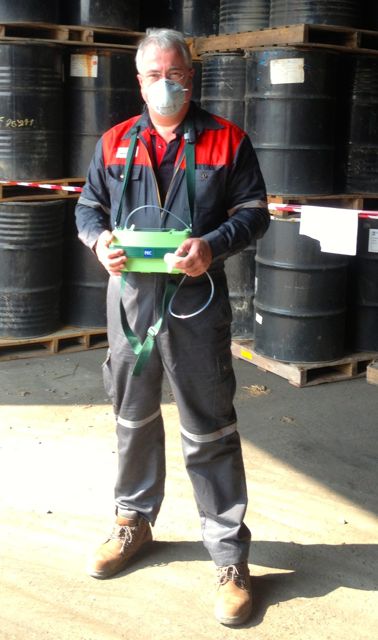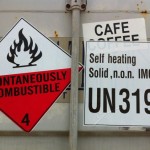On the path from waste generator to final disposal there are many hurdles to take. Below follows a global view of rules and regulations we encounter on the way.
International regulations
International movements of hazardous waste are regulated under the Basel Convention and the trade and use of mercury under the Minamata Convention, both are UN bodies.
The Basel Convention provides a framework to secure that hazardous waste is 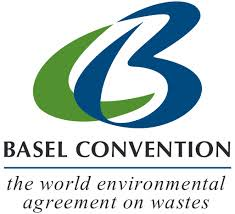 transported and disposed in a responsible and traceable way. It regulates the transport and disposal starting at the waste generator to the point where the disposal facility confirms final disposal and with this elimination of the liabilities of the waste generator. The waste generator stays responsible for their waste until it is completely disposed.
transported and disposed in a responsible and traceable way. It regulates the transport and disposal starting at the waste generator to the point where the disposal facility confirms final disposal and with this elimination of the liabilities of the waste generator. The waste generator stays responsible for their waste until it is completely disposed.
The Minamata Convention is aiming to protect human health and the environment from the adverse effects of mercury. As such the Minamata Convention target the use and trade of pure mercury and to limit the generation of mercury waste.
For the transport of mercury waste we have to follow the Basel Convention. Every country that ratified the Basel Convention should have a competent authority that executes and controls the regulations of the convention. These competent authorities are controlling the facilities that accept and process waste under the Basel Convention in their country and control the acceptation of waste. When applying for a Basel waste movement permit the starting point is always the competent authority in the country of origin of the waste. They will check if the waste generator is following the right procedures and provides the right information about the waste, transport and destination. If they are OK, than they will inform their colleagues in the destination country and ask them if they accept the waste to be delivered to the desired disposal facility in their country. This however is not all, the transport will often pass trough other countries and also here the competent authorities has to give permission to pass their territory. Even if the cargo never enters this country and the vessel carrying the containers with the waste only moors at a port this permission is required. Some countries have additional demands like security deposits and a local representative taking care of the shipment to make things more complicated. And to top it all off some countries are under revolution or war causing their authorities to be unavailable or the circumstances not suitable for transport of waste, etc. Depending on the speed of the various competent authorities it will take a while to get a waste movement approved, certainly several months.
Local rules and requirements
Country of origin
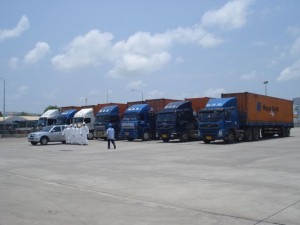 In many cases the country of origin of the waste has rules and requirements in addition to the Basel Convention. Examples are domestic waste movement permits, specifications of vehicles used for transport, insurances, licenses, storage permits, handling, packaging, etc. The customs in some countries are using special procedures for the export of hazardous waste. All things to cover in time to secure uninterrupted execution of a waste disposal project. As part of the Basel framework the authorities in the destination country are responsible for the audit and control of the disposal facilities in their country. Some authorities however in countries of origin insist on inspecting or auditing a facility before approving a Basel movement application.
In many cases the country of origin of the waste has rules and requirements in addition to the Basel Convention. Examples are domestic waste movement permits, specifications of vehicles used for transport, insurances, licenses, storage permits, handling, packaging, etc. The customs in some countries are using special procedures for the export of hazardous waste. All things to cover in time to secure uninterrupted execution of a waste disposal project. As part of the Basel framework the authorities in the destination country are responsible for the audit and control of the disposal facilities in their country. Some authorities however in countries of origin insist on inspecting or auditing a facility before approving a Basel movement application.
Destination country
The destination country can have additional requirements too although this in not common as most destination countries have incorporated the Basel framework in their regulations. Some things should be covered like possible differences in the requirements of securing cargo and maximum weights of trucks etc.
Company regulations
Waste generators
Waste generators, certainly when they are large multinational companies, have their own regulations about hazardous waste and mercury waste. They are generally targeted at minimizing liabilities at any stage of the waste disposal. This could include vendor approval procedures, audits of the disposal plant and even destinations of the remains of the waste after the mercury has been recovered.
Shipping lines
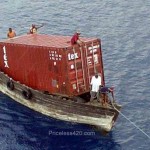 Shipping lines are a hard one these days several incidents in the past few years have made them much more aware of their risks and liabilities. Many shipping lines now refuse hazardous waste cargo completely. Those shipping lines that still accept it have tightened the rules and their control. Shipping lines now want to make very sure that they have no risk, in some cases every drum and pallet is checked and there need to very detailed reports of loading the containers before they are accepted on board.
Shipping lines are a hard one these days several incidents in the past few years have made them much more aware of their risks and liabilities. Many shipping lines now refuse hazardous waste cargo completely. Those shipping lines that still accept it have tightened the rules and their control. Shipping lines now want to make very sure that they have no risk, in some cases every drum and pallet is checked and there need to very detailed reports of loading the containers before they are accepted on board.
Recycling and disposal plants
Disposal plants have their requirements too and that can be about type of material that they can handle or not, level of mercury contamination, delivery schedule as they may have limited storage, transport routes, limits of disposal of secondary wastes after treatment, etc.
Many aspects need to be cleared before you can say that you have finally disposed of your mercury waste!
It’s not easy, but we can do it!
